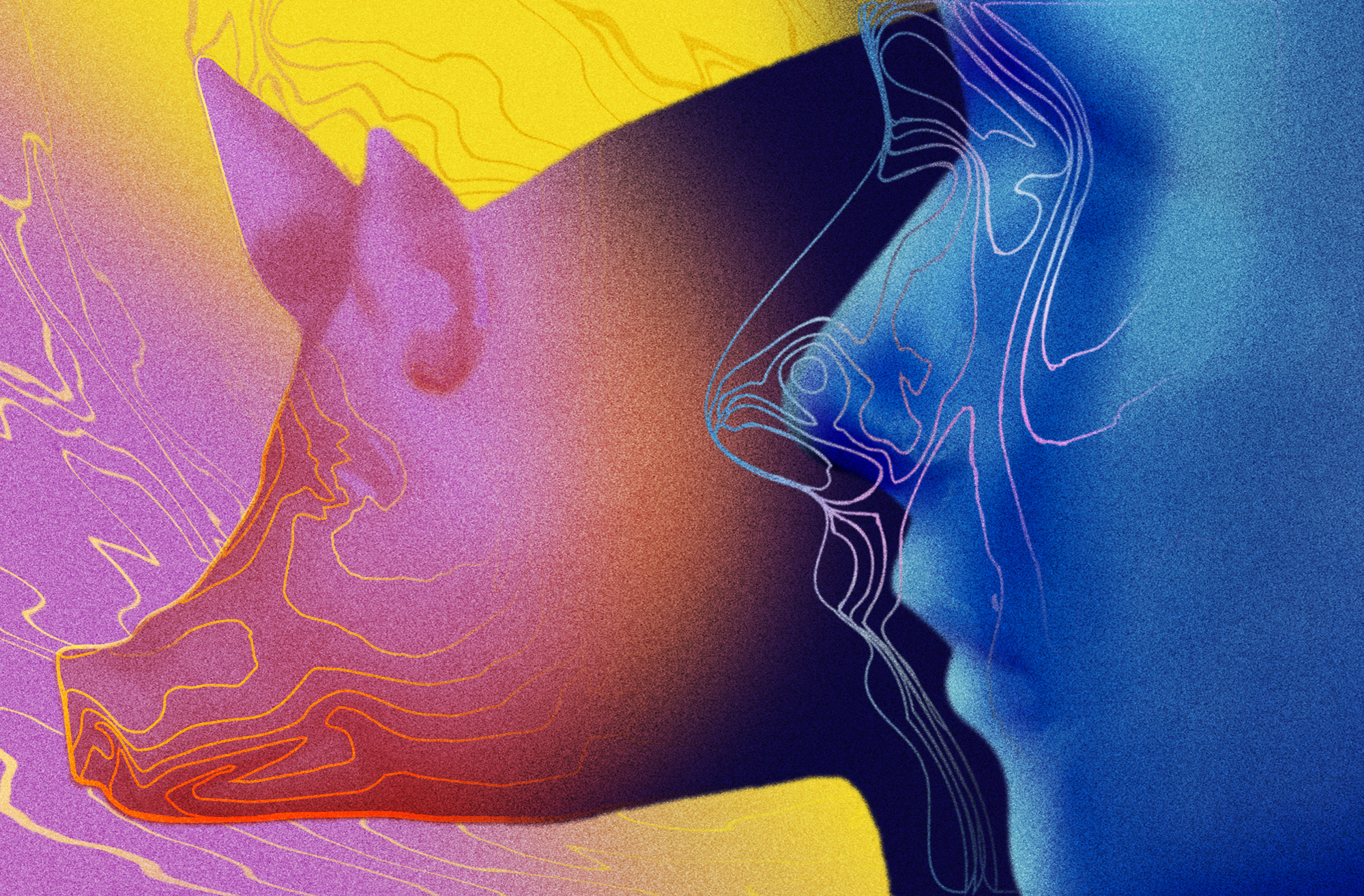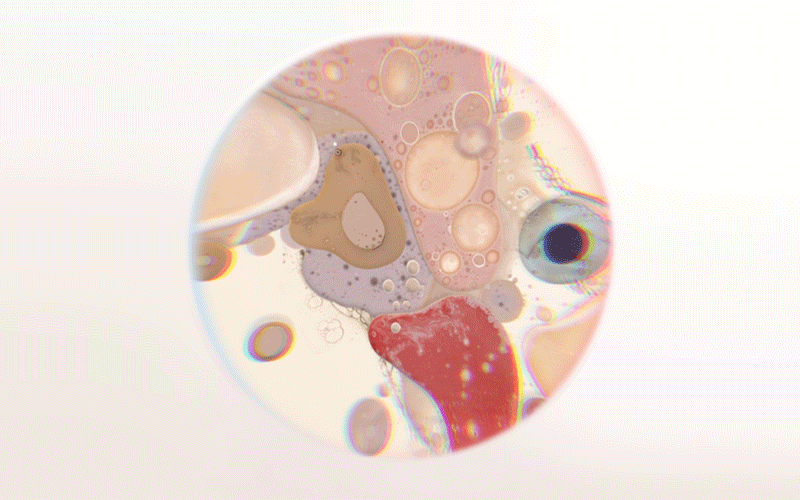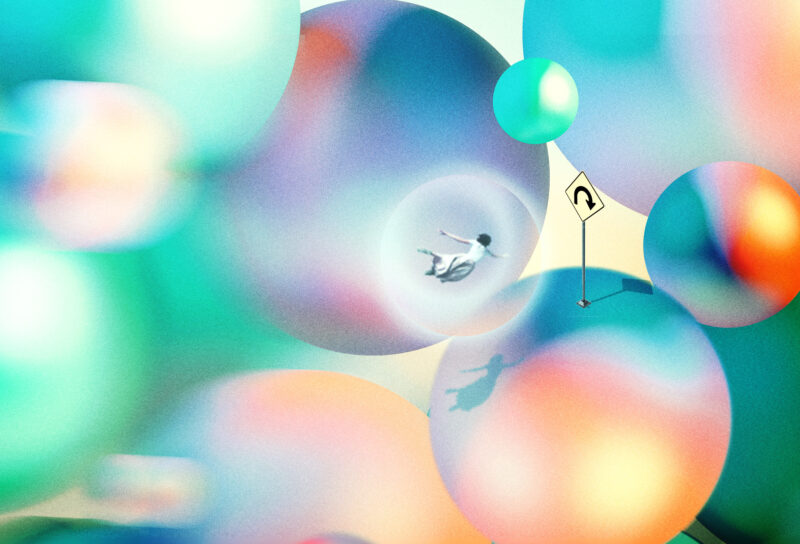On October 26, 1984, surgeon Leonard L. Bailey removed the heart of an anesthetized, seven-month-old female baboon and transplanted it into the body of infant Stephanie Fae Beauclair. “Baby Fae,” as she became known, was born premature with hypoplastic left heart syndrome, a congenital and typically fatal birth defect in which the left side of the heart cannot adequately pump oxygenated blood to the rest of the body. With few treatments available, she was discharged to her family to die.
Fae was not initially Bailey’s patient, but her referral presented him with an opportunity. For over a year, Bailey’s team had been preparing to carry out a pediatric heart xenotransplant, practicing on goats and juvenile primates. The severity of her diagnosis offered a chance to move from experiment to practice. And at first, remarkably, it worked: The baboon’s heart pumped life-giving blood throughout her body, averting all-but-certain death. Bailey and his collaborators were with her, day and night, ready to intervene should a surprise turn threaten their success. Then, 21 days later, on November 15, Beauclair died.
Bailey didn’t expect the procedure to get much attention, but the “Baby Fae” story provoked outrage and fascination, wall-to-wall media coverage, and fiery editorials across major scientific publications. “It was an election year, and you hardly knew Ronald Reagan was being re-elected,” he recalled many years later. After an initially hopeful month, buoyed by Fae’s brief survival, transplant scientists responded to public critique with a self-imposed “moratorium” on further human xenografts.
Baby Fae’s story frames most modern accounts of the history of xenotransplantation, a precautionary tragedy demonstrating the immense complexity of making organs from other animals function inside human bodies. Even as new immunosuppressant drugs and breakthroughs in genetic modification of donor animals dissolved the moratorium, her fate continued to paint the possibility of xenotransplanted hearts as a dangerous dream: something that existed, if at all, only in some distant future.
Until January 2022, that is, when David Bennett, a 57-year-old American man with life-threatening heart disease, received a transplanted pig heart. His news came not long after a widely publicized pig kidney transplant to a person with brain death in September 2021, and newspapers and television commentators voiced hopes that the “breakthroughs” were charting a path to the supply of organs for the many thousands languishing on donor waitlists. In a field long defined by protracted and fierce debates — Is xenotransplantation possible? Is it ethical? — Bennett’s surgery seemed to prove the boosters right.
Like any scientific discipline, xenotransplantation is sustained both by practice and by a constellation of stories. Those trained and inducted into the profession are taught about heroes, such as Bailey, and revolutionary procedures, like Fae’s. The past is a place of trials and lessons learned, the future one of possibilities and potential triumphs. As a field, xenotransplantation has always been future-oriented, hopeful. Even when March 2022 brought sad news of Bennett’s death, the prevailing sentiment was clear: “We hope this story can be the beginning of hope and not the end,” Bennett’s son said in a statement published by the University of Maryland School of Medicine.
As with, say, space travel or atomic physics, xeno practitioners foretell what they hope to actualize, a process that anthropologist Lesley Sharp calls “scientific prophecy.” Experts tell stories about the future — inevitable breakthroughs, infinite organs, an end to waitlists — to justify the work they hope to carry out. Science fictions, in this sense, are central to the production of science facts. Yet a persuasive vision of where we’re going also requires an account of where we used to be. Xeno-researchers have offered this, assembling reimagined myths and symbols from ancient history into a quirky tapestry that formalized the timeless desire for human-animal crosses. Between these two xenophilic visions, of past and future, the strangeness of combining human bodies with other animals’ organs is naturalized and normalized. We have always been, and sought to be, hybrid s.
If successful and widespread, xenotransplantation would transform our world. Countless lives might one day be saved, exchanged for the sacrifice of countless animal donors. But what do we owe other animals? And what do we owe each other? Exploring the stories scientists tell, and how they tell them, is vital for our capacity to engage these questions and understand the futures we may be rushing toward. Does the big story told about xenotransplantation portend its true outcome — or is it a web of partial hopes meant to hold its place in the future of medicine?
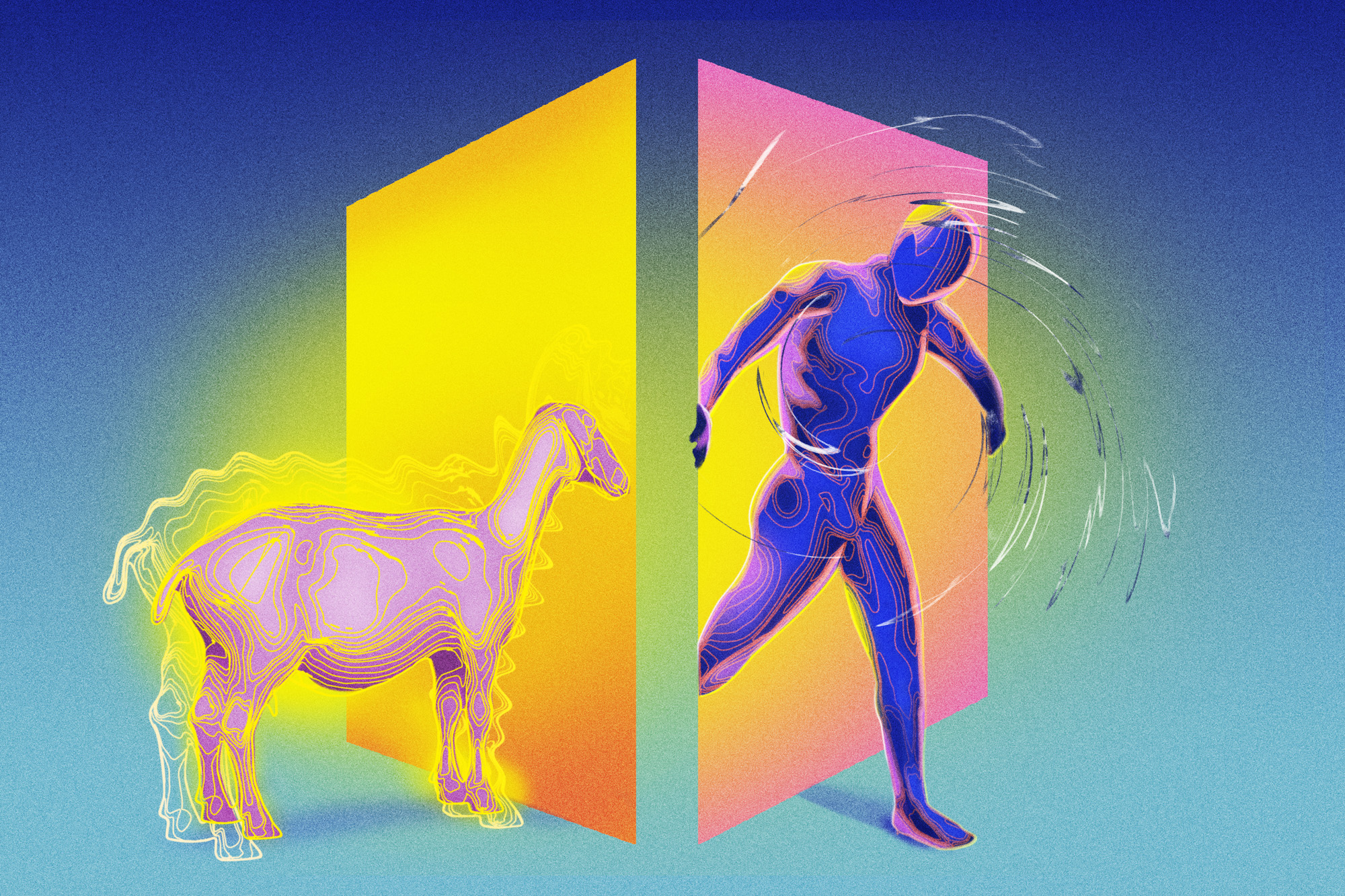
Old Stories
There’s a joke organ transplant scientists like to tell. It goes, “Xenotransplantation is the future of transplantation — and always will be.” Credited at times to pioneering xeno-surgeon Thomas Starzl (a xeno-optimist) and at others to heart transplant expert Norman Shumway (a xeno-pessimist), the joke is ambiguous. Allotransplantation, the transfer of organs between individuals of the same species — in this case human beings — found success in the mid-20th century, and many saw attention to xenotransplantation as a distraction from improvements to technique and the delivery of much-needed care. Xenotransplantation will always be the future, the joke suggests, because it won’t actually work. But a flipside to the joke reveals why someone like Starzl might get credit: perhaps xenotransplantation is the only future for transplantation. That flip-flop, between impossibility and inevitability, reveals the ambivalent status of the discipline, and the need for supporters to tell convincing stories about its necessity.
Despite serving as a major milestone in the storytelling of xenotransplantation, Baby Fae was hardly the first noteworthy attempt. At the start of the 20th century, surgeons in France, Germany, and the United States attempted a variety of highly experimental kidney xenografts from rabbits, pigs, goats, lambs, and one nonhuman primate (most were unsuccessful). In the 1960s, before long-term dialysis was possible, Tulane University transplant surgeon Keith Reemtsma attempted a series of chimpanzee-to-human kidney transplants on six patients with terminal renal failure. They survived for periods that ranged from one week to nine months. But for some, xenotransplantation’s history was much older and harder to pinpoint. Reemtsma, for instance, found xenotransplantation’s origins in myth. In the Metamorphoses of Ovid, Daedalus, the skillful craftsman whose labyrinth ensnared the Minotaur, built wings of feathers, wax, and thread to escape Crete with his son, Icarus. By strapping — or “grafting” — wings to his body, Daedalus became, in Reemtsma’s words, “perhaps the first to transplant across the species barrier successfully.” Yet it was a success with tragic consequences. As Icarus flew higher and higher, rejoicing in the awesome power of his wings, wind caressing his cheeks, the wax melted and he fell into the sea — an “acute graft rejection, attributed to a thermolabile adhesive,” Reemtsma wrote.
Xenotransplantation is the future of transplantation—and always will be.
The universe of transplantation is infused with such mythicism. In 1974, the year the American Society of Transplant Surgeons (ASTS) held its first national meeting, the group hired well-known medical artist Clarisse Francone-Ashworth to design a logo. In consultation with members, she drew a chimera, a lion-goat-snake hybrid. ASTS’s newsletter The Chimera, debuting in 1989, took its name from the logo. In the first issue, transplant surgeon Barry Kahan explained that the chimera was a hybrid, a symbol of the “conquest of the supernatural.” At the same time, the word chimera also denoted “a figment of the imagination or a fantastic idea.” What is more fantastic, wondered Kahan, than clinical transplantation? The chimera embodied “the substance (multiple diverse body parts)” as well as “the spirit of our specialty.” Chimerical concerns were also key to the naming of the field itself. “Xenotransplantation” is mid-20th century coinage: early transplantese was populated by a variety of other terms, such as “hetero-”, “homo-”, and “isografts”; “hetero-“ and “homo-transplantations.” Only in the 1960s did “xeno-grafts” and “-transplantations” take over. The reasons were variously scientific, political, and etymological, but “xeno” was chosen principally to avoid connecting a Latin prefix to a Greek suffix. Even the debates on naming were debates about chimeras.
Human transplantations did rely already on other animals, at least for preclinical testing, but the metaphor of a chimera felt preparatory—as if xenotransplantation was already the field’s destiny.
The Chimera newsletter debuted one year after a prominent meeting, Xenograft 25, which also chose the chimera as its symbol. The “moratorium” following Baby Fae had not yet lifted, but researchers had begun assembling at major transplantation meetings in the mid-1980s around a shared interest in returning attention to xenotransplantation. The loose band of researchers decided to call themselves, on Reemtsma’s advice, “ClubXeno” — a reference simultaneously to the “underworld” and their (in some views) illicit goals. ClubXeno’s first organized symposium in Barcelona in 1989 had 200 attendees, signaling to many the reemergence of xenotransplantation as an openly stated scientific objective.
By this time, the chimera was the “animal most commonly selected to symbolize xenografting,” surgeon David K. C. Cooper noted in a 1991 book on xenotransplantation. Yet sometimes described as a “savage creature” or “symbol of complex evil,” Cooper considered the chimera less than “ideal” to “represent a field of surgery and science that is intended to be wholly beneficial to the human race!” Instead, he proposed the lamassu, a protective human-bird-bull deity that stood guard, in statue form, before Assyrian palaces. This careful selection of a new symbol revealed that concerns about image and storytelling were essential in xenotransplantation’s struggle for legitimacy. The lamassu was, Cooper wrote, “a highly successful example of xenotransplantation,” with a human head set on an animal’s body. “Surely, we, the potential xenotransplanters, would prefer our aims and efforts to be associated with an animal of ‘kindly’ disposition and ‘divine character.’” In 1998, when the International Xenotransplantation Association (IXA) was founded, members opted to keep the lamassu as their logo.
By using chimerical symbols (at times playfully), researchers can downplay the exotic, dangerous, or monstrous undertones to their work. Xenotransplantation, seen thus, is an integral part of the human story, not something to be afraid of. But the Icarus account is in some ways the most revealing, and most honest, because it grapples explicitly with xenotransplantation’s relationship with sacrifice; Cooper quips that Daedalus’ “50% success rate” remains “enviable.” Baby Fae’s transplant was meant to save her, but her loss could also be justified if it meant moving closer to saving others in the future. Daedalus, after all, must risk Icarus to reach the distant shore.
Science Fictions
Xeno’s future is often imagined and depicted very differently from accounts of the field’s yesteryears. The past is a simian time of experiments and failures; the future, instead, is porcine.
Xeno-optimists today claim that genetically engineered pigs could make the donor-organ shortage a thing of the past. Despite the chimera’s and lamassu’s suggestions of numerous species stitched together, for the last 15 years, coverage of xenotransplantation and its promise has focused on pigs, rather than nonhuman primates or anything else, as the plausible bottomless source of human organs.
The first serious attempt to transplant a pig organ into a human being was undertaken by French surgeon René Kuss in the mid-1960s. The transplanted kidney quickly experienced hyperacute rejection, deterring the team from further work on pigs or initially reporting their findings. It took a couple decades for pig organs to regain some traction in xenotransplant research. Alongside the public reemergence of an organized xenotransplantation research community, cracks began to appear in the field’s stated preference for “concordant” donors (i.e. primates) over “discordant” donors, such as pigs. At 1988’s Xenograft 25, a symposium marking the twenty-fifth anniversary of Reemtsma’s “first successful xenotransplant in man,” scientists still largely focused on nonhuman primates, but multiple attendees noted the attraction of shifting to hogs. “From many standpoints,” Harvard Medical School’s Robert L. Kirkman explained, “the pig seems an ideal donor for xenotransplantation into man.” The two species shared “remarkably similar internal anatomy” and “pigs are widely available, breed readily, are extensively used for domestic purposes and are unlikely to generate extensive opposition to this additional use for the benefit of man.”
Even if transplantation between concordant species might be easier, discordant sources offered clear benefits in terms of supply, an increasingly prominent framing for the field. If so many people are waiting for organs, boosters argued, the only question is how to produce more of them. Nonhuman primate donors were especially problematic in this way. They were often endangered species and therefore subject to practical and philosophical restrictions. This was particularly true if the operations required gene editing, which appeared more and more essential from the 1990s onward as scientists earned a greater understanding of immune rejection. Many mid-century experimenters saw graft rejection as unidirectional: the receiving body refuses the alien organ. But Thomas Starzl and colleagues at the University of Pittsburgh Medical Center argued in a 1997 paper titled “The Future of Transplantation” that rejection was a two-way process. The organ rejects its new body too. It was an “epiphany,” in Starzl’s framing, that rejected medicine’s presumed subject-object dichotomy. If the two-way paradigm was right, then xenotransplant doctors would need to do more than suppress the immune system of the recipient. They needed to breed chimeric animals — with cells and genetic material from human beings — that bore organs which appeared, immunologically, “human.”
Gene-editing nonhuman primates would have rung alarm bells among conservationists, philosophers, and bioethicists. Xenotransplantation scientists knew this, receiving a preview of that uproar at Xenograft 25 from no lesser authority than the primatologist Jane Goodall.
Confessing that her own mother’s life had been saved by a surgical pig valve, Goodall made her position — and that of animal lovers more broadly — crystal clear: “I do not believe that it is ethically acceptable to use chimpanzees for any procedure that will result in their death — such as heart transplant research.”
Hogs, on the other hand, had been reengineered from head to tail over centuries of agricultural use, and there were no beloved porcinologists ready to stand up in opposition.
Ethical considerations were, in some ways, subsidiary to the basic logistics of breeding. Primates produce offspring slowly and sparingly. Wild female chimpanzees tend to reproduce once every five years, baboons every other year — cycles that could plausibly be accelerated, but not without invasive interventions. This challenge limited the expanded use of nonhuman primates in experimental research throughout the 20th century. Pigs, on the other hand, can generate large litters at a rapid clip. At least 1 billion pigs are produced by the global agricultural industry annually, and they are killed at an unfathomable rate. (Imagine the entire population of India disappearing every year.) As anthropologist Alex Blanchette has recently shown in his book Porkopolis, the saturation of our everyday lives by pig products — in foods, gelatins, fuels, and much more — makes it difficult to even imagine a world without their decimation. As more and more voices began to support pigs as organ donors, the baboons that nearly saved Fae began to disappear from view, yet not entirely from practice: Starzl and others still had to demonstrate that chimeric pig-baboon organs could be successfully transplanted into the bodies of baboons before they could imagine putting pig-human organs into us.
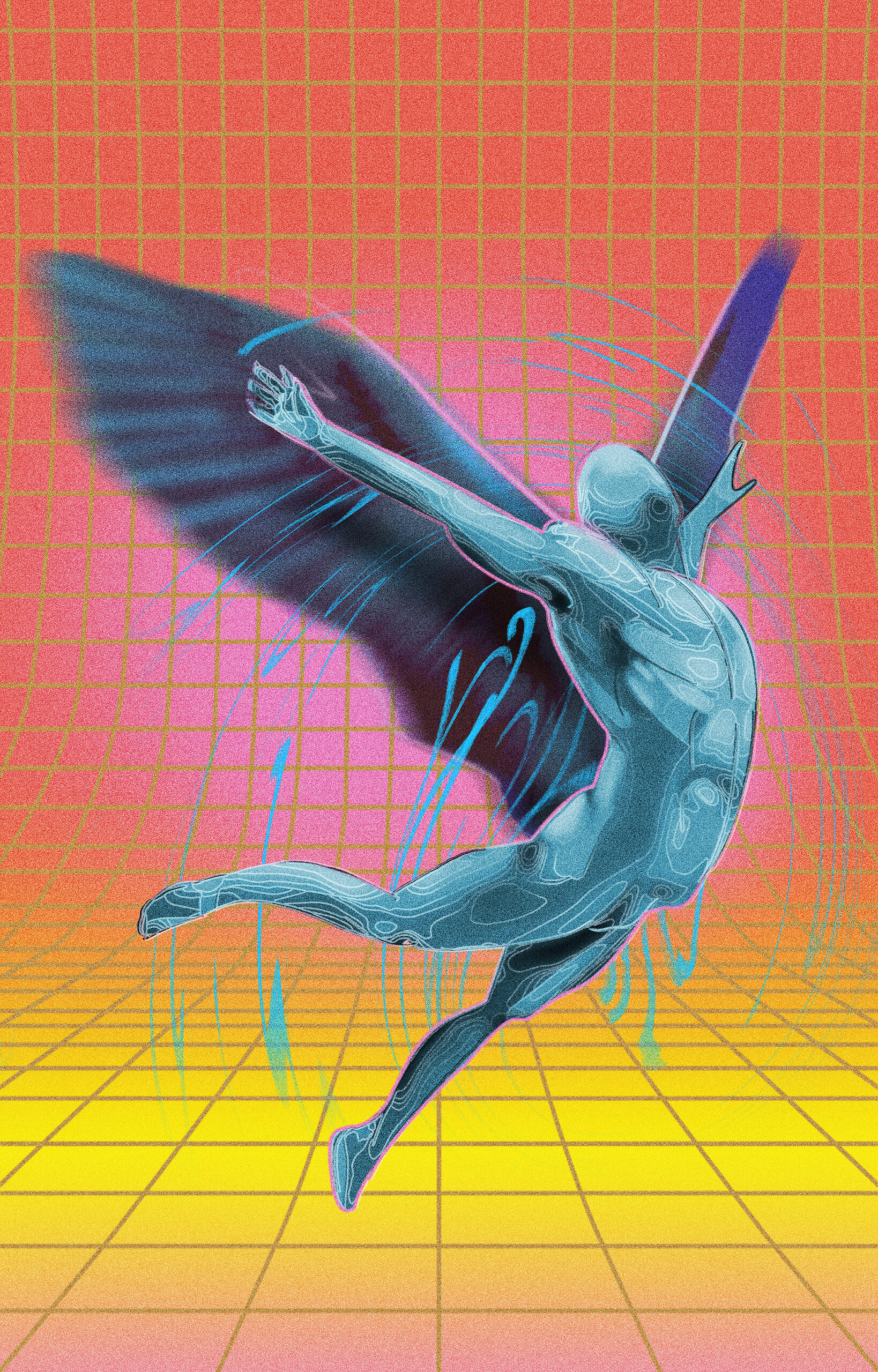
One Unit of Future Measurement
The future of xeno is pigs, but it is also a future filled with strange characters: high-tech biofarms and seas of “humanized” pig organs flowing freely into needy human bodies. It is unsurprising that xenotransplantation has been an essential set piece to signify distance from the present in sci-fi stories by Margaret Atwood and Yann Martel, along with episodes of Star Trek and much else. In Atwood’s dystopia Oryx and Crake, scientifically engineered “pigoons” hold multiple organs ready to be transplanted at a moment’s notice; in Martel’s, heart xenotransplants convert their recipients into beasts. Fiction and fact become muddled. After the recent pig transplant attempts, author Scott Sigler described it as “your sci-fi plot [becoming] reality.” Author Malorie Blackman saw “her sci-fi novel about a pig heart transplant come true.”
Some researchers have even dabbled in their own science fiction. Cooper and scientist Robert Lanza’s book Xeno: The Promise of Transplanting Organs Into Humans (2000) begins with a foreword from physician and novelist Robin Cook, a friend of Cooper’s, whose novel Chromosome 6 (1997) focused on a near-future where genetically modified chimpanzees emerge as possible organ donors for humans. Cook acknowledges that Chromosome 6 exists as “a mixture of scientific fact and fiction that is only a step ahead of the real-life medical advances that are taking place today”; Xeno itself serves as proof that “the future has almost arrived.”
The book’s first chapter, “The End of the Night Shift,” begins in a future where the authors describe a routine, late-night porcine xenotransplantation at an unnamed hospital. The case is far from exceptional, the story explains, with “Similar operative procedures” taking place “at several other donor centers strategically placed throughout North America, in Europe, Japan, and Australia.” Up to 200 organs are transplanted each day, amounting to 50,000 yearly. Cooper and Lanza ask readers to “imagine this scenario,” one sustained and made possible by “veterinary institutions situated in farms where [specially bred] pigs are … reared by the thousands.” Then we return, with our authors, to the present.
What is striking about this sci-fi fragment is how similar it is to our reality: cities, countries, and regions are the same; organ transplant numbers parallel present projections. Cooper and Lanza’s future is not particularly far away. This, however, is representative of the particular futurity of xeno discourses. For practitioners, the future is not-yet-here and not-very-far-off, squarely within the timeframe of the “soon.”
Xenotransplantation can’t be here yet, with all of the present obstacles. But at the same time, it can’t be very far away either, because grants need funding, experiments need doing, and urgency must be maintained. Thus, predictions for the field’s major breakthroughs typically fall in an intermediate frame: in 2002, attendees of the annual meeting of the American Association for the Advancement of Science predicted pig transplants by the end of the decade. In informal conversations, scientists will often get more specific: the first successful porcine heart transplant by 2022, the first lung transplant by 2030. Of course, these numbers can always be pushed back a few years, as necessary.
One of the crucial reasons for the immediacy of these predictions is that xeno is really only one of the possible futures of the field of transplantation. For instance, what if the future of transplantation is just 3D-printed organs? Some advocates predict 3D-printed cellular scaffolds for regrowing tissue and a printed rodent heart within 5 years. Or what if the future of transplantation is simply improvements to organ preservation technologies, enabling more to be recovered from cadavers? The United Kingdom’s “Organ Donation and Transplantation 2030” blueprint focuses on the need for legislation to increase voluntary donations and improve utilization of existing organs, while a team of international transfusion researchers predict that “organ conditioning or repair” will become a “hot topic” over the next 10 years. Others anticipate the emergence of new composite allografts, the possible discontinuation of immunosuppressive medications, the use of stem cells for organ regeneration, or even biomechanical devices that replace the functioning of entire organs. “The future of transplantation is one full of exciting possibilities,” explained a 2009 statement from the American Society of Transplantation — but with so many possibilities, it can be hard to know which one is actually coming.
For practitioners, the future is not-yet-here and not-very-far-off, squarely within the timeframe of the “soon.”
Many in the transplantation field have long been convinced that alternatives to xenotransplantation are more likely to work than porcine organ farms. Resources and time, they say, should be dedicated to accelerating their arrival instead. But xenotransplantation advocates usually respond that those alternatives are simply producing their own science fictions, selling an immediacy that is out of pace with actual technological progress. Artificial organs would be great, xeno researchers often admit, but they’re just a bit too far away. In the particular story about the future that keeps xeno running, the now-time of allotransplantation and scarcity and the then-time of printed organs must be bridged by the necessary sacrifices required by xenotransplantation. Whether they are right, only time may tell.
Hybrid Futures
Narratives about past and future are key not only to how we talk about science, but also to how science happens. We know from studying the cycles of hype and hope that shape the contemporary biotechnology and pharmaceutical industries that the ability to effectively articulate and define the future might win funding and social approval or risk failures and rejection. In a parallel way, for many decades, xenotransplantation researchers have explained the necessity of their work by offering stories and arguments about where we come from and where we might yet go. Long, long ago we dreamed of combining ourselves with other animals, and future generations may someday be saved from tremendous pain and death by becoming hybrid in the same way. But will it really work, or remain just another science fiction? For now, even terminological debates are unresolved: researchers introduced the term “chimbrid” in the 2000s to resolve ambiguities in the use of the terms “chimera” and “hybrid” across the biological sciences. Stranger creatures still might be just beyond the horizon.
If xenotransplantation really is the future of transplantation, Cooper and coauthors argue that it would make allotransplantation, eventually, “of historic interest only.” In the long view of our species’ long love affair with alien organs, allotransplantation will be but a blip. After Bennett’s successful surgery, researchers from the University of Minnesota’s Department of Surgery argued in The Annals of Thoracic Surgery that the pig heart transplant “further solidifies a foundation of evidence to someday make xenotransplantation commonplace as the key to the organ shortage problem.” Bennett’s procedure represented the culmination of “countless stories of hybrid human and beast throughout history.” Someday, very soon.
As much as we all might wish it otherwise, the story of xenotransplantation is still one of longing and tragedy, losses that often quickly disappear from popular memory in the surge of optimism about what is yet to come. David Bennett passed away, even as some speak of the “success” of his procedure. If myths and fables predicted xenotransplantation, perhaps Bruegel’s depiction of the fall of Icarus did so most aptly: the plow is pushed forward, and far in the background, a life is extinguished in the ferocious swell of the idyllic sea — not far away, but hardly noticed as the present moves ever onward.
